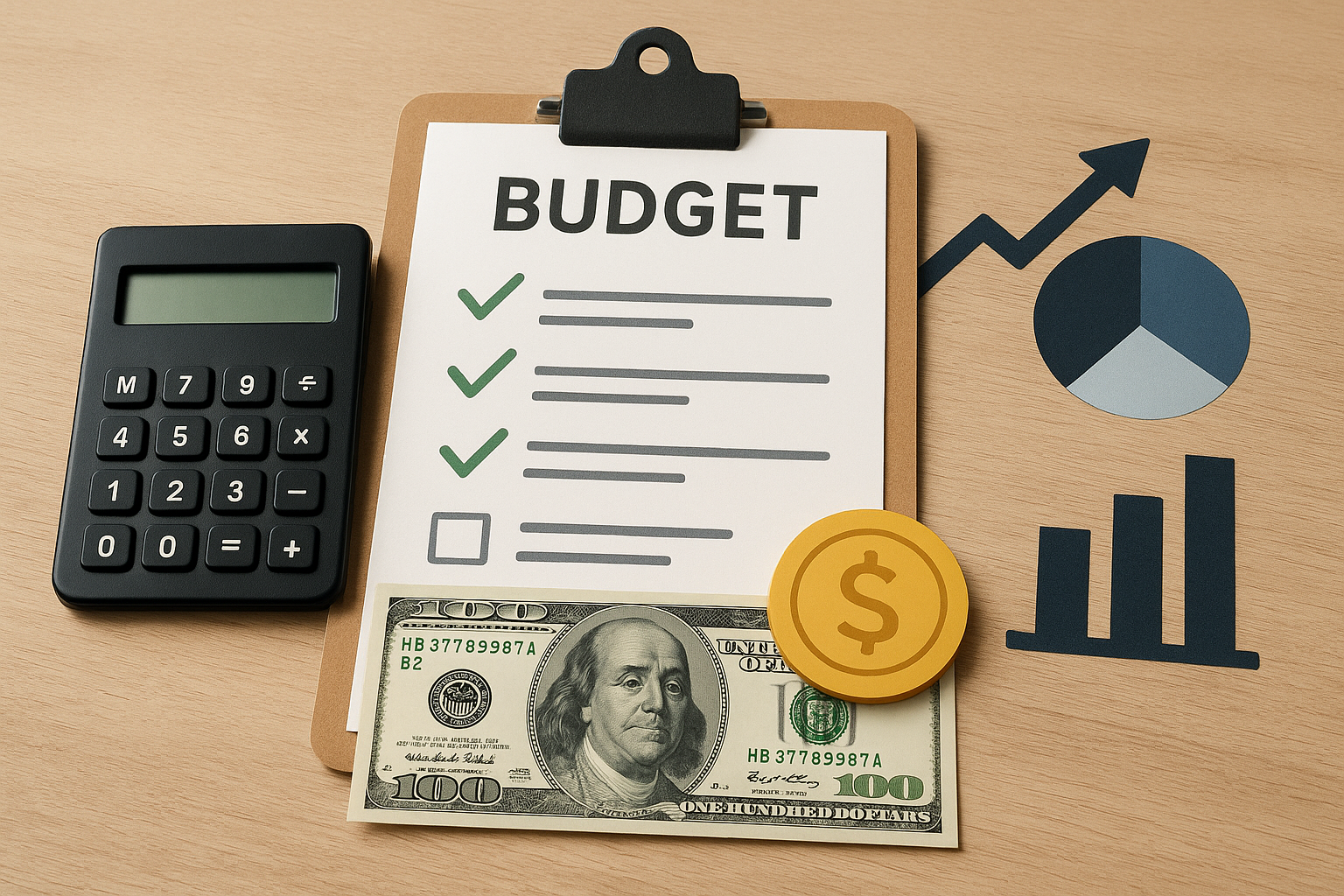Introduction to Effective Financial Planning
Financial planning is a cornerstone of personal financial stability and long-term wealth accumulation. It involves managing your money to achieve your financial goals, from short-term savings to long-term retirement. Effective Financial Planning isn’t just about having money; it’s about making informed decisions on how you earn, spend, save, and invest. This guide will explore essential aspects of Financial Planning, focusing on personal budgeting as a fundamental tool. Understanding and implementing sound Financial Planning strategies empowers individuals to control their financial future, reduce stress, and build a secure foundation. Effective Financial Planning is key to long-term success, ensuring robust Financial Planning for everyone.
At its core, financial planning is a roadmap. It helps identify your current financial position, where you want to be, and the best routes to get there. Without a clear financial planning strategy, individuals can drift, making impulsive decisions that lead to debt and anxiety. Dedicating time to develop a robust financial planning framework is an investment in your future. This article provides a detailed exploration of personal budgeting within Financial Planning, offering practical steps to master your finances and achieve your Financial Planning goals. This comprehensive guide is your key to effective Financial Planning.
The Importance of Personal Budgeting in Financial Planning
Personal budgeting is arguably the most critical component of effective Financial Planning. A budget is essentially a detailed plan that outlines how you will spend and save your money over a specific period, typically a month. It acts as a control mechanism, allowing you to monitor your income and expenses, identify areas of overspending, and allocate funds towards your financial goals. Without a budget, even the most ambitious Financial Planning goals can remain elusive. It provides clarity and transparency regarding your financial situation, which is indispensable for making sound Financial Planning decisions.
Many people view budgeting as restrictive, a tool that limits their spending and enjoyment. However, a well-constructed budget is quite the opposite; it’s a tool for liberation. It gives you permission to spend on things that truly matter to you, while consciously reducing expenditures on items that don’t align with your values or Financial Planning objectives. By understanding where every dollar goes, you gain immense power over your money, transforming from a passive observer to an active participant in your Financial Planning journey. This proactive approach to Financial Planning is what differentiates those who achieve financial success from those who struggle. It is a testament to the power of dedicated Financial Planning and a key element of successful Financial Planning. Indeed, robust Financial Planning is the bedrock of financial freedom.
Key Benefits of Integrating Budgeting into Your Financial Planning
Integrating budgeting into your Financial Planning offers numerous advantages. It’s a cornerstone of successful Financial Planning:
• Enhanced Control: A budget provides a clear overview of your financial inflows and outflows, giving you complete control over your money. This control is vital for effective Financial Planning.
• Goal Achievement: By allocating specific amounts to savings and investments, a budget directly supports the achievement of your Financial Planning goals, such as buying a home, funding education, or securing retirement. This is a core aspect of Financial Planning, vital for effective Financial Planning.
• Debt Reduction: Budgeting helps identify surplus funds that can be directed towards paying down high-intThis is a fundamental step in any sound Financial Planning strategy, crucial for effective Financial Planning.
• Reduced Financial Stress: Knowing exactly where your money stands and having a plan for it significantly reduces financial anxiety, contributing to overall well-being and better Financial Planning.
• Identification of Wasteful Spending: A detailed budget often reveals unnecessary expenditures, allowing you to reallocate those funds to more productive areas of your Financial Planning.
• Improved Decision-Making: With a clear financial picture, you can make more informed decisions about major purchases, career changes, and investment opportunities, all of which are integral to Financial Planning.
Step-by-Step Guide to Personal Budgeting for Financial Planning
Creating a personal budget doesn’t have to be complicated. It’s a systematic process that, once established, becomes a powerful habit in your financial planning toolkit. Here’s a step-by-step guide to help you create an effective budget that supports your financial planning goals:
Step 1: Calculate Your Net Income
The first step in any financial planning budget is to understand how much money you actually have coming in. Your net income is the amount of money you take home after taxes and other deductions (like health insurance premiums or 401(k) contributions) are subtracted from your gross income. If you have multiple income sources, such as a salary, freelance work, or rental income, make sure to include all of them. For accurate financial planning, it’s crucial to use your net income, as this is the money you have available for spending and saving.
Step 2: Track Your Spending
This is often the most revealing part of the budgeting process for financial planning. For at least one month, meticulously track every dollar you spend. You can use a spreadsheet, a budgeting app, or even a simple notebook. Categorize your expenses as you go. This step provides a realistic picture of your spending habits and is essential for identifying areas where adjustments can be made to improve your financial planning. Many people are surprised to discover how much they spend on non-essential items once they start tracking.
Step 3: Categorize Your Expenses
Once you have a month’s worth of spending data, categorize your expenses. Generally, expenses fall into two main categories for financial planning purposes:
• Fixed Expenses: These are costs that typically remain the same each month and are essential for living. Examples include rent/mortgage payments, loan payments (car, student), insurance premiums, and utility bills. These are usually non-negotiable in the short term and form the baseline of your financial planning budget.
• Variable/Discretionary Expenses: These costs fluctuate each month and are often non-essential. Examples include groceries, dining out, entertainment, clothing, and subscriptions. These are the areas where you have the most flexibility to make cuts and optimize your financial planning efforts.
Step 4: Set Realistic Financial Goals
Before you start allocating funds, define your financial planning goals. Are you saving for an emergency fund, a down payment, a vacation, or retirement? Having clear, measurable, achievable, relevant, and time-bound (SMART) goals will provide motivation and direction for your budget. Your budget should be a tool that actively helps you achieve these financial planning goals.
Step 5: Create Your Budget Plan
Now, it’s time to put it all together. Compare your total net income with your total expenses. Ideally, your income should be greater than your expenses, leaving you with a surplus to allocate towards savings and debt repayment. If your expenses exceed your income, you’ll need to make adjustments. This is where the insights from tracking your spending become invaluable for your financial planning.
Popular budgeting methods that can aid your financial planning include:
• The 50/30/20 Rule: This simple rule suggests allocating 50% of your after-tax income to needs, 30% to wants, and 20% to savings and debt repayment [1]. This is a straightforward approach to financial planning that many beginners find easy to follow.
• Zero-Based Budgeting: Every dollar of your income is assigned a job (spending, saving, or debt repayment) so that your income minus your expenses equals zero. This method requires more discipline but ensures every dollar is accounted for in your financial planning.
• Envelope System: A cash-based system where you allocate cash into physical envelopes for different spending categories. Once an envelope is empty, you stop spending in that category until the next budgeting period. This is a tangible way to manage your financial planning.
Choose a method that resonates with your lifestyle and commitment level. The best budget for financial planning is one you can stick to consistently.
Step 6: Monitor and Adjust Your Budget
Budgeting is not a one-time event; it’s an ongoing process. Regularly review your budget (monthly or quarterly) to ensure it aligns with your actual spending and financial planning goals. Life circumstances change, and your budget should evolve with them. You might find that some categories need more funds, while others can be reduced. Flexibility is key to successful long-term financial planning.
Advanced Financial Planning Strategies Beyond Budgeting
Beyond basic budgeting, several other strategies are crucial for comprehensive Financial Planning. These build upon a solid foundation to optimize your financial resources for growth and security.
Building an Emergency Fund
An emergency fund is a critical component of any robust Financial Planning strategy. This savings account covers unexpected expenses like job loss or medical emergencies. Experts recommend three to six months’ worth of living expenses in an accessible account. This fund acts as a financial safety net, preventing debt during unforeseen circumstances and protecting your overall Financial Planning efforts.
Managing Debt Effectively
Debt can significantly impede your Financial Planning goals. High-interest debts, especially credit card debt, can quickly spiral. Effective debt management involves strategies like the debt snowball or avalanche methods. Prioritizing debt repayment, particularly high-interest debt, is crucial for improving financial health and advancing your Financial Planning objectives.
Investing for the Future
Once you have a solid budget and emergency fund, investing is the next logical step in your Financial Planning journey. Investing allows your money to grow over time, helping you reach long-term goals like retirement or education. Understanding investment vehicles (stocks, bonds, mutual funds, ETFs) is essential. Diversification, risk tolerance, and a long-term perspective are key principles in successful investment Financial Planning.
Retirement Planning
Retirement planning is a specialized area of Financial Planning focused on ensuring sufficient funds for your desired lifestyle post-work. This involves understanding retirement accounts (401(k)s, IRAs), calculating needs, and consistently contributing. The earlier you start retirement Financial Planning, the more time investments have to grow through compounding.
Insurance and Risk Management
Protecting assets and income from unforeseen events is vital for Financial Planning. This includes adequate insurance (health, life, disability, home/auto). Risk management in Financial Planning identifies potential threats and implements strategies to mitigate their impact, ensuring a single event doesn’t derail your financial future.
Estate Planning
For comprehensive Financial Planning, especially with accumulated wealth, estate planning is important. This involves decisions about how assets will be managed and distributed after your death. Tools like wills, trusts, and power of attorney ensure your wishes are honored and minimize complications for beneficiaries. This final stage of Financial Planning provides peace of mind, securing your legacy.
Conclusion: Empowering Your Financial Future Through Planning
Financial planning is an ongoing, dynamic process that requires commitment and regular attention. By mastering personal budgeting, you lay a strong foundation for all other aspects of your financial life. From building an emergency fund and managing debt to investing wisely and planning for retirement, each step in the financial planning journey contributes to a more secure and prosperous future. Remember, the goal of financial planning is not just to accumulate wealth, but to achieve financial freedom and peace of mind. Start your financial planning today, stay consistent, and adapt your strategies as your life and financial circumstances evolve. With diligent financial planning, you can transform your financial aspirations into reality, securing a brighter tomorrow for yourself and your loved ones.
References:
NerdWallet. (2025, July 1). How to Budget Money: A Step-By-Step Guide. Retrieved from
Investopedia. (n.d.). The Ultimate Guide to Financial Literacy for Adults.



